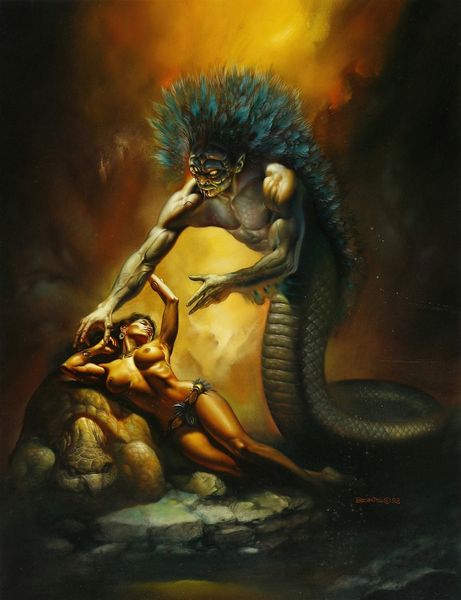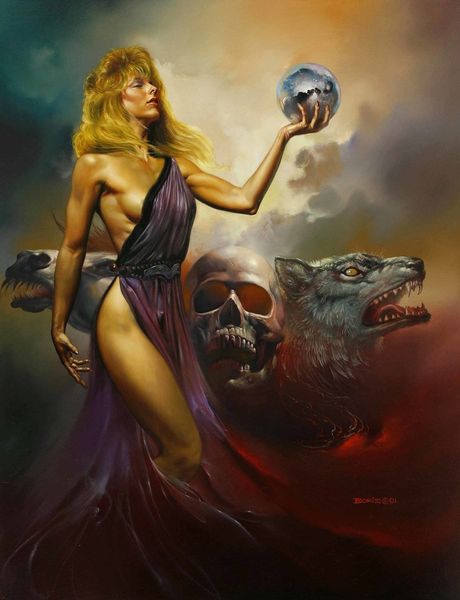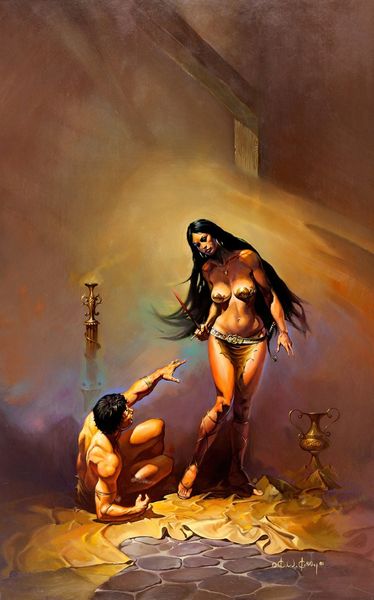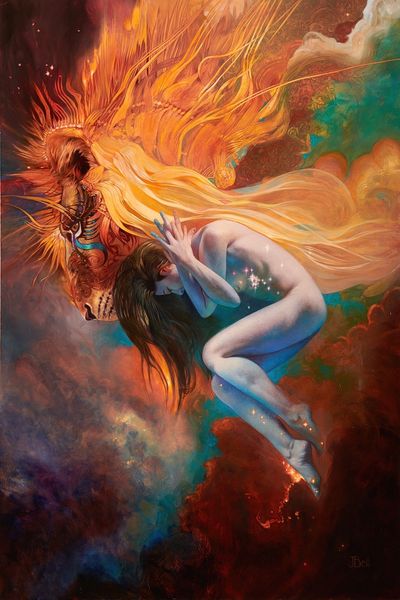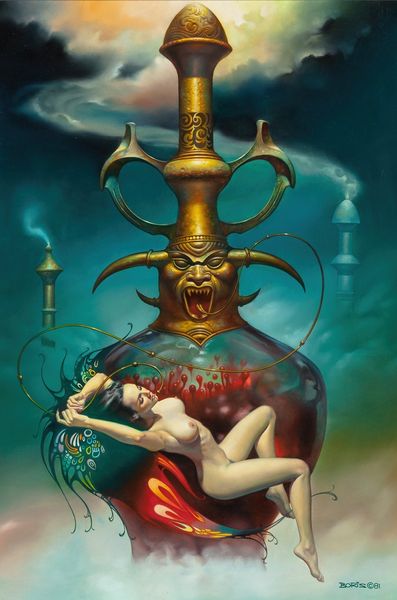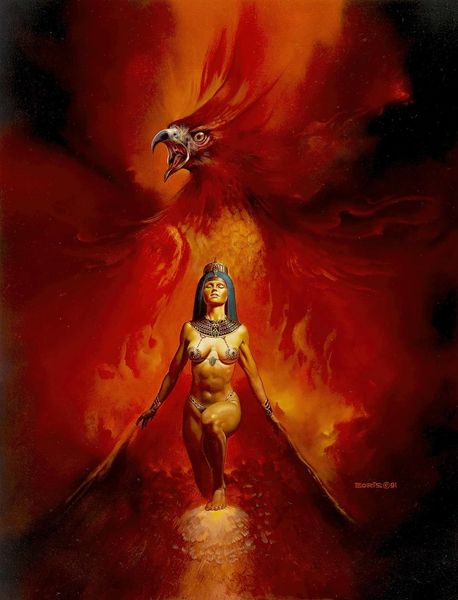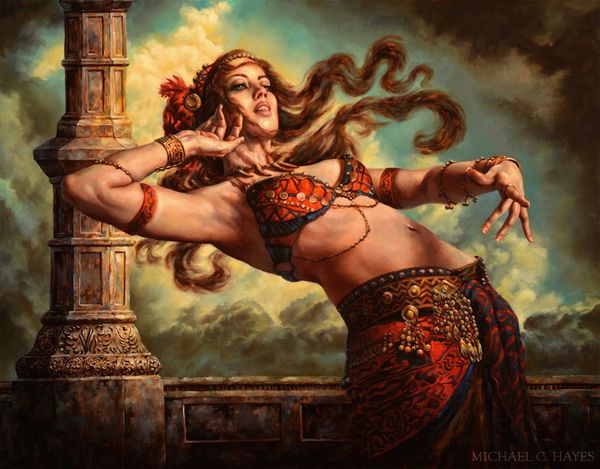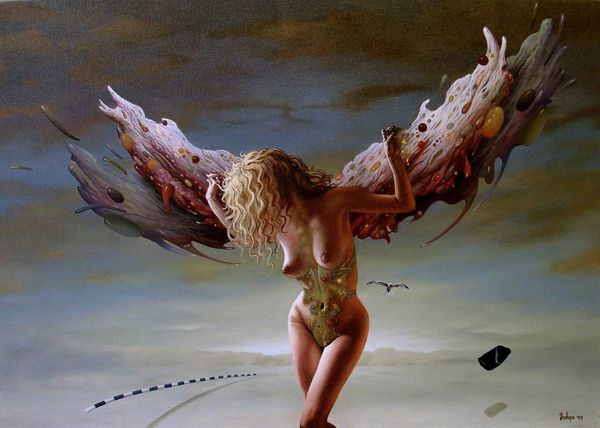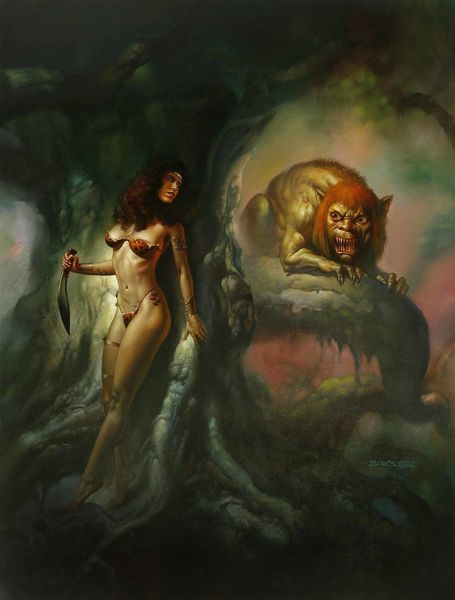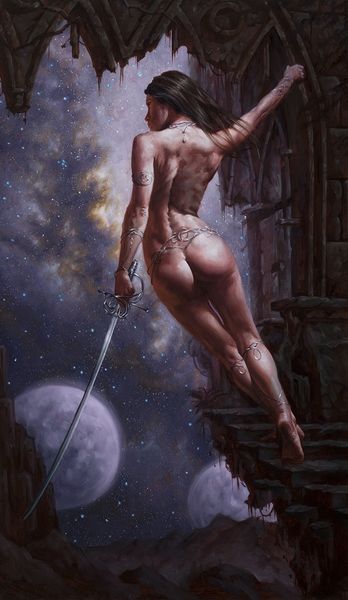
Deijaneira, Ladies; Retold Tales of Goddesses and Heroines book illustration 1990
0:00
0:00
painting, acrylic-paint
#
narrative-art
#
painting
#
fantasy-art
#
acrylic-paint
#
figuration
#
academic-art
#
erotic-art
Copyright: Modern Artists: Artvee
Curator: What strikes me immediately is the overt theatricality—it’s pure melodrama, yet intensely captivating. The stark juxtaposition of the cool, almost serene woman against the fiery scene… it's undeniably potent. Editor: Indeed. What we have here is Boris Vallejo's acrylic painting from 1990, titled "Deijaneira, Ladies; Retold Tales of Goddesses and Heroines book illustration". Vallejo was well-known for his heroic fantasy art, frequently adorning book covers with his highly-stylized depictions of mythology. This piece retells the story of Deianira, the wife of Hercules, who unwittingly poisoned him with a centaur's blood, believing it was a love potion. Curator: Ah, the eternal allure of cautionary tales. Visually, Deianira’s detached composure amplifies the psychological impact of her act. She stands apart, seemingly unmoved by the agonized Hercules behind her engulfed in flames. What I see is a commentary on the often invisible or unacknowledged agency women possess within patriarchal myths. Editor: I appreciate your insight on the iconography; it invites speculation regarding societal expectations for women and how art and illustration have been leveraged to subtly reinforce social constructs, in this case within fantasy. The eroticism that marks much of Vallejo's art also serves to complicate readings about feminine power. It simultaneously amplifies and constrains his female characters. Curator: The snake bracelet encircling her arm echoes these conflicting currents. Serpents are historically symbolic of both healing and treachery, weaving the narrative thread of consequence and deception. Editor: The flames not only serve to express Hercules's suffering, but become visually a part of Deianira as the red draping becomes contiguous with the fire behind. It speaks to Deianira being intertwined and at fault in the circumstances of her husband's death, even if she has been misled by believing in the magical abilities of Nessus's blood. The scene is, therefore, deeply internalized in her psyche. Curator: What persists with me is how symbols evolve across generations and cultural contexts, remaining universally evocative regardless of their historical origins. Editor: Absolutely, these retold narratives enable us to reimagine entrenched societal roles. A piece like this allows examination of power structures. Thank you for joining me to look at this captivating work of art!
Comments
No comments
Be the first to comment and join the conversation on the ultimate creative platform.
